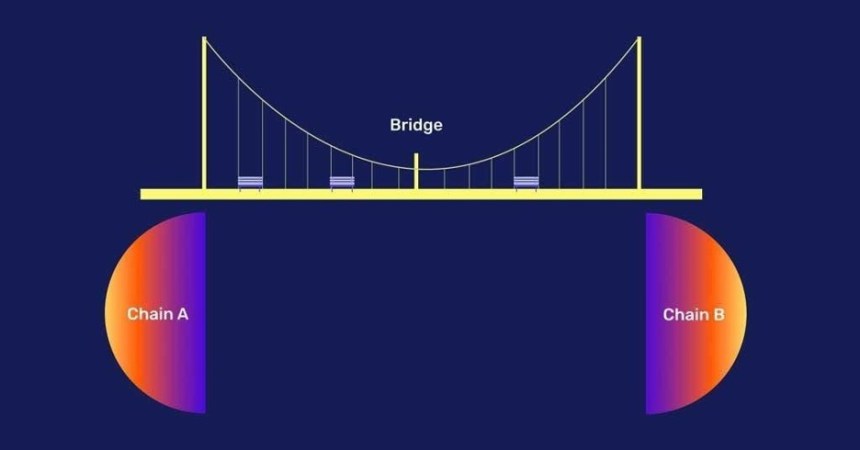Reason to trust

How Our News is Made
Strict editorial policy that focuses on accuracy, relevance, and impartiality
Ad discliamer
Morbi pretium leo et nisl aliquam mollis. Quisque arcu lorem, ultricies quis pellentesque nec, ullamcorper eu odio.
As the blockchain ecosystem continues to expand, interoperability between different networks becomes increasingly important. Bridging assets from one blockchain to another allows users to leverage the unique features and benefits of multiple platforms. In this guide, we will walk you through the process of bridging your assets from Ethereum to Blast, ensuring a smooth and secure transition.
What is Blockchain Bridging?
Blockchain bridging involves transferring assets or data from one blockchain to another. This process is crucial for interoperability, enabling users to move their tokens, utilize decentralized applications (dApps), and take advantage of the features offered by different blockchain networks.
>> Go to the official bridge website here <<
Why Bridge from Ethereum to Blast?
Ethereum is a well-established blockchain known for its robust ecosystem of dApps and smart contracts. However, it often faces issues such as high gas fees and network congestion. Blast, on the other hand, is a newer blockchain designed to offer faster transaction speeds and lower fees. By bridging to Blast, users can benefit from:
- Lower Transaction Fees: Significantly reduced costs compared to Ethereum.
- Faster Transactions: Enhanced scalability and quicker confirmation times.
- Access to New dApps and Services: Leverage the unique features and applications on the Blast network.
Prerequisites
Before you start bridging from Ethereum to Blast, ensure you have the following:
- Ethereum Wallet: A wallet like MetaMask or Trust Wallet with the assets you wish to bridge.
- Blast Wallet: A compatible wallet for the Blast network.
- Bridging Platform: A trusted bridging service that supports Ethereum to Blast transfers.
- Sufficient ETH: Enough Ethereum to cover the gas fees for the transaction.
Step-by-Step Guide to Bridging from Ethereum to Blast
Step 1: Set Up Your Wallets
-Ethereum Wallet: Ensure your Ethereum wallet (e.g., MetaMask) is funded with the tokens you want to bridge and enough ETH for transaction fees.
-Blast Wallet: Create or access your Blast wallet. Make sure it is compatible with the assets you intend to bridge.
Step 2: Choose a Bridging Platform
Select the official bridging platform that supports Ethereum to Blast transfers. Some popular bridging platforms include.
Step 3: Connect Your Wallets
– Connect Ethereum Wallet: Go to the bridging platform and connect your Ethereum wallet. Follow the prompts to authorize the connection.
– Connect Blast Wallet: Similarly, connect your Blast wallet to the bridging platform.
Step 4: Select the Assets to Bridge
Choose the specific assets you want to bridge from Ethereum to Blast. Double-check the amounts and ensure you have enough ETH to cover the gas fees.
Step 5: Initiate the Bridge
– Confirm Details: Review the transaction details carefully, including the destination address on the Blast network.
– Approve Transaction: Approve the transaction on your Ethereum wallet. This might involve signing a transaction and paying the associated gas fees.
– Wait for Confirmation: The bridging process might take a few minutes to complete. Monitor the transaction status on the bridging platform.
Step 6: Verify the Transfer on Blast
Once the transaction is confirmed, check your Blast wallet to ensure the assets have arrived. It’s a good practice to verify the transaction on a Block Explorer for additional confirmation.
Tips for a Smooth Bridging Experience
- Double-Check Addresses: Always verify the destination addresses to avoid any loss of funds.
- Monitor Gas Fees: Gas fees on Ethereum can vary. Choose a time when the network is less congested to save on fees.
- Use Trusted Platforms: Only use reputable and secure bridging platforms to protect your assets.
Conclusion
Bridging assets from Ethereum to Blast can unlock new opportunities and efficiencies for blockchain users. By following the steps outlined in this guide, you can ensure a secure and seamless transition between these two networks. Stay informed about the latest developments in blockchain technology to continue leveraging the best features of different ecosystems.
Check out this blog for more updates on blockchain technology and detailed guides. Happy bridging!
Disclaimer: This is a paid release. The statements, views and opinions expressed in this column are solely those of the content provider and do not necessarily represent those of NewsBTC. NewsBTC does not guarantee the accuracy or timeliness of information available in such content. Do your research and invest at your own risk.

















